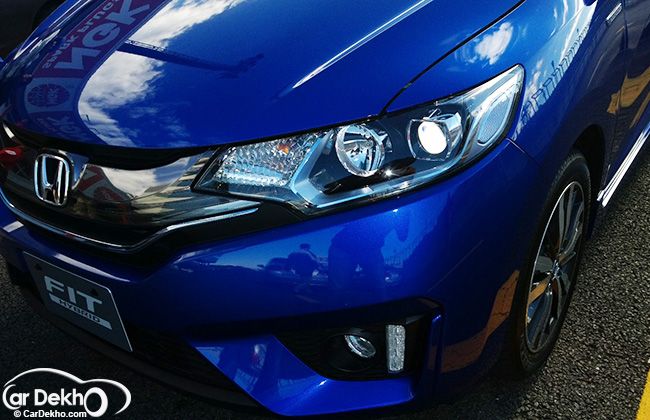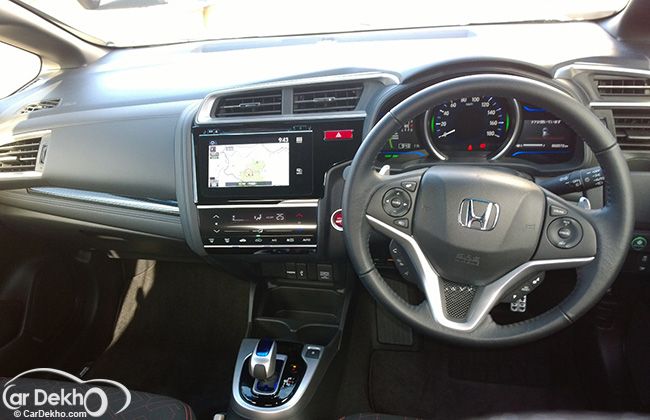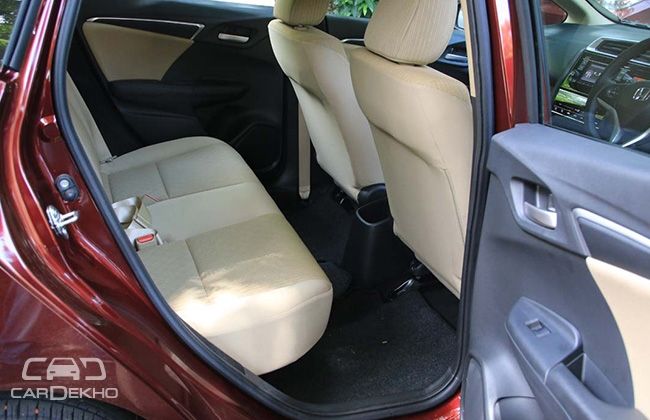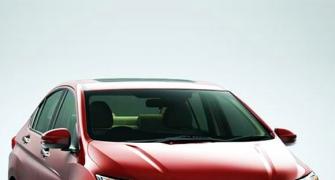Honda is hoping that the new Jazz will endear itself to buyers in a way that the earlier version couldn’t.

Honda Cars India’s innings had been quite flawless till the launch of the Jazz in 2009.
Having enjoyed a good run as the manufacturer of best-selling cars, the Japanese company had then decided to take a bold step and launch a larger than normal hatchback at a premium price.
Unfortunately for the big H, there were hardly any takers for the car it had named the Jazz.
As a product, the Jazz had a lot of strengths — ample space, a fuel-efficient engine and many road qualities.

But in all honesty, it was launched way before its time.
Honda also couldn’t keep a check on the price because most of the car’s parts were not locally manufactured. Not surprisingly, the music faded out.
Six years later, Honda is all geared up to sing a new tune.
It can now hope that the new Jazz will endear itself to buyers in a way the earlier avatar hadn’t.
The market is a lot more favourable for premium hatchbacks.
In fact the segment is flourishing today, with Hyundai’s i20 Elite leading a handsome pack.

The new Jazz retains the MPV-like silhouette, similar to the previous edition, and yet, from the chassis to the dimensions, everything is new about the car.
The height and width of the car remain the same, but the wheelbase has been extended. This naturally translates into more cabin space.
The Jazz does look a lot more sharper and funkier, and should lure young buyers.
It has an edgier appearance with the slim, angular, City-like headlamps and a chunky black front grille for a nose that merges with the headlamps.

With a lower mesh grille on the bumper and fog lamps, it actually comes across as pleasantly aggressive.
Its side profile remains virtually the same apart from a crease running across the doors all the way to the LED tail lights.
The car has also been fitted with all-new 15-inch alloy wheels, though these still look small in proportion to its body.
The Jazz has big, wide, lightweight doors that are almost 3 kg lighter than the ones in the older model.

Getting in and out of the car is very easy and is convenient for elderly passengers.
The Jazz continues have a green house-like airy cabin with big windscreens.
The boot too is generously endowed but more importantly its loading bay is low and wide and will make loading the luggage easier.
The cabin layout is all too familiar as it is designed after the City’s. Honda has taken a safe approach and has gone for tried and tested interiors.

I feel it should have been bolder and opted for big changes. The quality of the interiors is no doubt better than in the previous Jazz, but when you are taking on a car such as the i20 Elite, you need to think out of the box.
The new Jazz is available in two cabin trims: beige for the mid-level range and all black for the top variants.
It comes with a 6.2 inch touchscreen audio-visual navigation system.
I found the touchscreen responsive in the manner of a smartphone.
But should the sun beat down on the display, it is difficult to see much on it.

The Jazz also comes with a touch panel for air-conditioning control, as in the City, which is also a first in this segment.
To reduce your parking troubles, which is an everyday hassle for most drivers, the Jazz is equipped with a rear camera.
The older Jazz had a lot of storage space, but now Honda has taken it a notch higher and equipped it with nine cup holders.
The cabin space is easily the best in the class. It allows four 6-foot plus passengers to sit comfortably.
The seats provide decent support, but the seat squab is fairly flat and lacks thigh support.

The front passenger seat reclines all the way back to the rear seat, which makes it a sofa, so you can put up your feet, sit back and relax.
The Jazz’s flexible rear seats, the so-called “magic” seats, are split rear seats and can be folded individually or made to lie completely flat to increase the boot space.
But unlike in the previous Jazz, the magic seats aren’t a standard feature and are only available in the top-end variants.

Unfortunately for this review, Honda has embargoed all information about the engine till today afternoon, so I can’t reveal much here.
But this much I will confirm — the new Jazz will be available in 1.5-litre diesel and 1.2-litre petrol versions.
The latter will come with two gear transmission options: manual and CVT automatic with paddle shifters.
You can expect these engines to be among the most efficient in the segment; and in terms of performance, they are ideal for commuting.
I drove the car in Goa, and the driving experience proved effortless.

The gear stick is slick, the clutch and accelerator pedals are light, and the ride quality is comfortable with the suspension set-up ensuring the car does not crash into potholes.
The new Jazz has a lot of things going for itself — class-leading cabin space, loads of storage space, improved exterior looks, diesel engine option, rear-parking camera and flexible rear seats.
However, because Honda is extremely price conscious about this version of the Jazz, it has kept the features list light when compared to the competition.
So it has no start-stop ignition button, or an AC ioniser for better air quality or even rear AC vents. But it is still the most versatile hatchback and that should go in Honda’s favour.
And I guess the company will price it around the Rs 600,000 mark in close competition with the leader of the pack.
Photograph: Courtesy, Cardekho.com
Arup Das is Features Editor at AutoX










